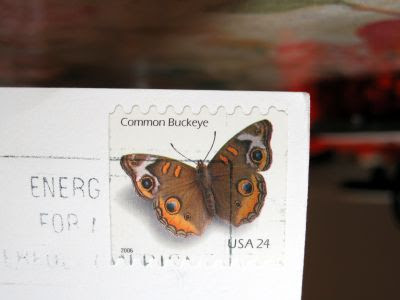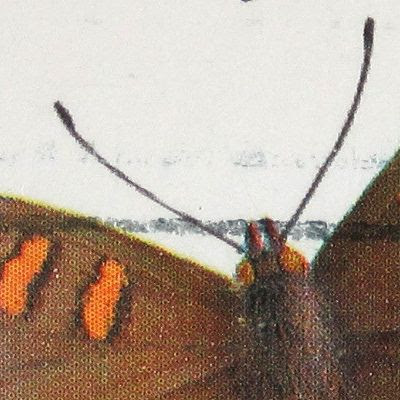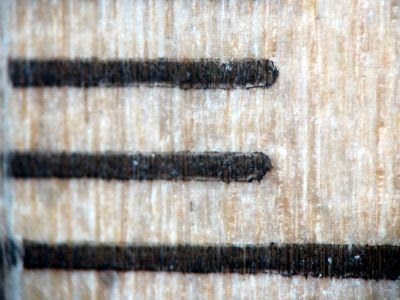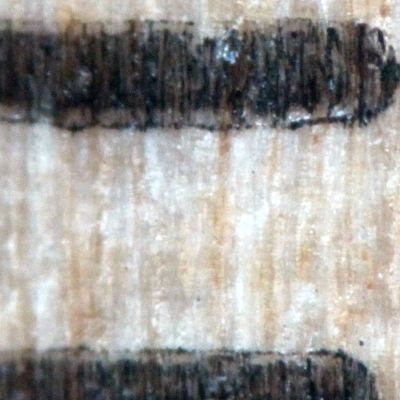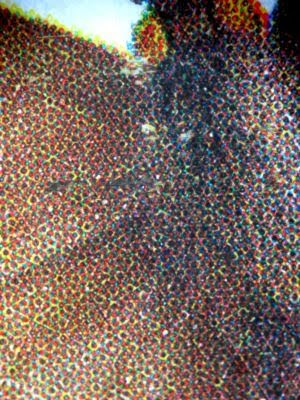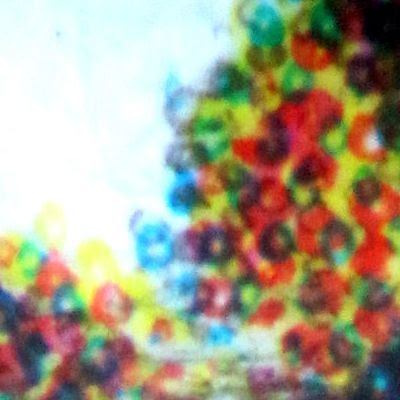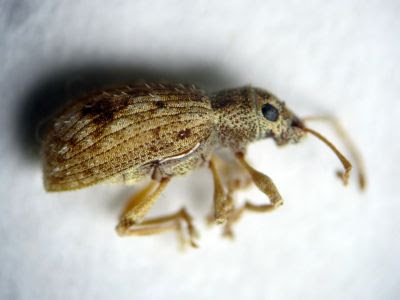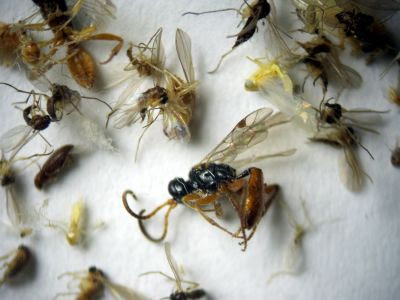kw: book reviews, nonfiction, languages, creativity

Many years ago, buying gas at an Oklahoma truck stop, I bought this soda can holder/cooler. It has served me well ever since. It has also sparked comment from time to time, as people notice it and falter a bit, knowing that I am the kind of guy who owns two Toyota Camry sedans (one is 10 years old, the other 19). I am just not the bad boy type, and I have never gone to an event to see monster trucks crush "ordinary" vehicles, in between chain races and other sorts of vehicular mayhem (correction: at age 13, I went with a church youth group to a Demolition Derby, an activity that got the youth leader into a bit of hot water).
I am much more the techno-geek type, a lifelong computer programmer, one who can read the encyclopedia or a dictionary for pleasure. It makes me very, very akin to the kind of people who like the Klingon language. Myself, having once been fluent in French (I can still read it), and later flunking a German class or two, and further getting just enough of a smattering of Japanese from my wife to get me in conversational trouble, I have no more interest in acquiring a new language. If I did, it wouldn't be Klingon anyway; it really is a "monster truck" sort of language (I'd pick Esperanto).

Klingon, as created by Mark Okrand and codified by the
Klingon Language Institute, is one of four invented languages that has become, to some extent, a living language, with a generous handful of fluent speakers and hundreds who've learned enough to earn a first-level pin. Though this graphic shows a script invented for the language, so far as I know everyone who writes Klingon uses Latinized transliteration:
nuqneH = "what do you want?", the closest Klingon equivalent to "hello".
Arika Okrent has earned her first pin in Klingon. As she reports in her book
In the Land of Invented Languages: Esperanto Rock Stars, Klingon Poets, LogLan Lovers, and the Mad Dreamers Who Tried to Build a Perfect Language, she has also become conversant in
Esperanto and managed to translate a sentence or two into
LojBan (a semi-living "logical language" that spun off of LogLan).
This last is no mean feat. Consider
ei do cusku le do se skudji. Though this is intended to translate "You should say what you mean" (as the March Hare told Alice), when translated literally back to English, it comes out "You are obliged to say the desired-to-be-said thing". Because of its hyper-logical structure, LojBan has dozens of words for "is" (Bill Clinton would have loved it). Nonetheless, it has a number of at least competent speakers/users.

The fourth invented language still in use is
Blissymbolics, which was intended as a universal pictorial script, but has become of use as a "bridge" script for disabled children to help them learn to communicate in a written language. Preliterate children who cannot speak are not helped by facilitated communication when presented with a board covered with English (or French or whatever) words. If they are first taught the symbols for a few dozen meanings, and these are then presented along with written equivalents, they soon learn to make themselves understood, and in the process, learn the written words.
The Bliss text above means "I like to go to the cinema". Three of the symbols/symbol groups can be figured out by most people, while the fourth, once it is explained to be "house+seeing+showing or projecting", makes sense and is easily remembered. This shows also the concept behind many "logical" languages, in which a "small" (a few hundred) easily-remembered concepts are grouped to express all other concepts. Ideographic languages, primarily Chinese, have a similar basis, but one needs the spoken language to learn the symbols, which do have a phonetic basis.
How many invented languages are there? Prior to the Internet's ubiquity, at least 900 created languages were seriously touted in print after about 1150 A.D., when Hildegard von Bingen produced Lingua Ignota and proclaimed it a language that facilitated (Christian) spiritual communication. Though Ms Okrent writes of "900 languages in 900 years", all the languages after Lingua Ignota were published after about 1500 A.D., so it is more accurate to write "900 in 500". In an appendix to the book, the author lists 500 languages with their creators and publication dates, ranging to 2007.
Few invented languages have hit print since 2000 A.D.; it is so much cheaper to publish on the Internet. Also, the reasons for language creation have changed over time. Prior to about 1950, there was an about equal emphasis on Logicality and Internationality. Since about 1980, these impulses have been reduced to a dull rumble, and "conlangs" and "artlangs" have taken over. The former are languages constructed, as Klingon was, more for interest than for a purpose, and the latter are those created purely for creative reasons. Many of these have decades of work behind them, and there are hundreds of them.
Nearly all language creators are men, and most begin at a very young age. Two women of note are Fra von Bingen, as noted above, and Suzette Elgin, creator of Láadan, with its unique feminine perspective (six words for various experiences of menstruation, for example).
Other than the four mentioned, and a few conlangs or artlangs that have a current following, invented languages fail of their object. Only Esperanto has become a widespread communication medium. Translating Hamlet into Klingon, for example, does not emable Klingon aficionados to enjoy the Bard in Klingon; it is more of a "neat hack", like a computer program that can produce a workable concordance at a single whack (a task usually done with five or six utility programs).
It is no surprise to me that most invented languages fail. Who is willing to learn to parse, or spell,
pretzpxn ljbztur frateriorpur ("The price of my brother's book" in "A Universal Language" by James Ruggles), let alone try to pronounce it? Usually, nobody except the lone fellow who invented it. But if the "Simple English" used in some Voice of America broadcasts were ever codified, it would rank as a usable invented language, bringing the total to five.
Among all these, including the few still in use, I have a bit of interest only Ludwig Zamenhof's Esperanto, created and developed in the 1870s and '80s, and published in 1887, when its creator was 28. Zamenhof grew up in an area of Eastern Europe in which you had to know three or four languages just to buy groceries, and also saw the mutual animosities among members of the various language groups. He was motivated to produce a language for everyone, in hopes to foster peace through better communication. Hundreds of others have had the same impulse; what did he do right?
Timing was a key element. An older "universal language" named Volapük was losing ground, stranding adherents who were sympathetic to its goals. Another element was the use of word roots that stood midway between several familiar languages, being derived from Indo-European roots. And a huge element of the success was the use of suffixes to add meanings to the relatively small corpus of root words. Thus while the
frat- root denotes siblinghood,
frato means "brother",
fratino means "sister", and other words that require gender distinctions use the
-o and
-ino endings to make it. The basic use of the
-o ending, however, is to denote "noun", as in
vero, "truth". Other endings indicate that a word is a verb, adjective or adverb, with variations of the verb ending to indicate tenses. Esperanto is a very inflected language, but the inflection system is much simpler than that of, for example French, which I find to be endless.
The single most important factor is that Zamenhof was not thin-skinned. He didn't keep tight control of every aspect of the language; he did not treat it as his "inviolable offspring". Nearly every other language creator wound up exhausting himself fighting with those who wished to use the language, but had their own ideas (as absolutely everyone does) about this or that detail. Esperanto became living because its creator let it live and encouraged the creativity of those who could help it become more and more comfortable to speak.
Languages require a certain amount of ambiguity to work well. Our mind is extremely good at detecting nuance; we are good at resolving ambiguity. This puts less of a load on a language's speakers to speak with exactitude. This is the problem with LojBan; it is so exacting that absolutely nobody, even its most ardent speakers, can carry on a conversation without the help of a lexicon to remind them of the precise way to express some exact shade of meaning. Its grammar book masses six hundred pages. English grammar can be conveyed in twenty pages, and you really only need the first two or three pages of the summary you'll find at the end of a good dictionary. Esperanto grammar is even sparser, because the words carry word-type meanings in their suffixes and affixes.
As a lifelong amateur linguist, I am very beholden to Ms Okrent for this volume. It banished in me for good any notion of producing a language of my own or to try a hand at "reforming" English spelling. It also confirmed for me that artificial languages make sense primarily in artificial contexts. I am fluent in Fortran, Pascal and Basic, less so in Visual Basic, and can get by in Perl and C only with the book open constantly (kind of like a LojBan speaker). These are all "formal languages" that are used to direct the operations of computers. Music notation is also a formal language, one that cannot be spoken, only either written or performed. It is like a computer program with the musician acting as the computer. I read music pretty well, but not with the fluidity of a competent conductor.
A final note: the primary impulse driving language creators in the past decade or two has been artistic. J.R.R. Tolkien was an early "artlang" creator, the producer of Welsh-inspired "elven" languages, which he published in 1955; he said more than once that his books were a vehicle to provide a context for the languages, on which he had spent forty years. Have a look at the
Omniglot Conlang pages and
Artistic Languages in Wikipedia for an introduction to the field. Also, the author maintains a
website based on the book that contains lists of languages with dates and creators, and added material about many of them.
 It uses embroidery that looks the same from both sides (except it is a mirror image). A fraying corner makes it evident it is machine made; there are two complete embroidered designs, that meet where the threads pass through one another using the fabric only for a holding template.
It uses embroidery that looks the same from both sides (except it is a mirror image). A fraying corner makes it evident it is machine made; there are two complete embroidered designs, that meet where the threads pass through one another using the fabric only for a holding template.









